4/2025: THE U.S. FOOD & DRUG ADMINISTRATION ANNOUNCES ROADMAP TO PHASE OUT ANIMAL TESTING
4/10/2025 - In a momentous victory for animal rights, the United States Food and Drug Administration (FDA) released a roadmap to phase out animal testing for drug development. This shift away from animal testing comes as a huge victory to the millions of animals who are tortured and killed in needless experiments each year.
The FDA plans to replace animal testing in the process of drug development with New Approach Methodologies, like lab-grown human organs, advanced computer simulations and referring to previously released data. For years, animal rights activists like LCA have called attention to the cruelty, inefficiency, and inaccuracies of animal testing (i.e: 92% of drugs that pass animal testing fail in human trials).
Over the next 3-5 years, the FDA is aiming to drastically reduce animal testing, making it the "exception rather than the norm". The FDA plans to work with other U.S. government agencies, including the National Institute of Health and Veterans Affairs to promote alternate methods.
Although LCA would like to see the end of all animal testing, we recognize this is an important milestone to stop the suffering of animals in laboratories. It is also important to note that though this move by the FDA is vital, it does not mean the end of all animal research in the U.S There are stil many federally funded animal research programs being conducted across the nation.
"The new policy to phase out animal testing at FDA is welcome but long overdue," said Chris DeRose, LCA's president and founder. "It is disgusting that medical research laboratories that are federally funded by HHS and the National Institutes of Health continued to torture animals for decades by using them as subjects for gruesome medical experiments and tests. For the past 40 years, LCA has been uncovering some of the most shocking medical research practices, and regardless of politics, we are thankful to the Trump administration, under the leadership of Secretary Kennedy, has finally begun to put a stop to it."
Throughout the years, LCA has been on the front lines of the fight to end vivisection since it was founded in 1984. Over the years, LCA has witnessed the suffering of dogs, cats, pigs, monkeys, rabbits, rats, mice, fish and guinea pigs, all in the name of science. LCA believes animals are highly sentient creatures who exist their own reasons, independent of their service to humans; they should not be made to suffer for the latter.
To learn about why LCA has opposed animal testing for over 40 years, click here to watch LCA's groundbreaking undercover investigation narrated by Joaquin Phoenix into ITR Labs in Quebec, Canada, here. You can also watch LCA's latest investigation into animal testing on rats here.
2022: FDA PASSES MODERNIZATION ACT
In December 2022, Congress passed the FDA Modernization Act 2.0. The Act will end the requirement that experimental drugs be tested on animals, allowing for non-animal testing. LCA would like to thank President Biden, who is expected to sign the Act, which is part of the omnibus spending bill, shortly. The FDA previously mandated experimental drugs must be tested on animals before they are used on humans in clinical trials.
2018: CALIFORNIA BANS COSMETICS TESTED ON ANIMALS
In September 2018, Governor Jerry Brown signed SB 1249 into law, making it illegal to sell products in California that were tested on animals. The law, which goes into effect January 1, 2020, makes California the first state in the nation to enact such a ban.
ABOUT VIVISECTION / ANIMAL RESEARCH
Vivisection is the practice of cutting into or using invasive techniques on live animals. The term is derived from the Latin word vivus, which means "alive." Animal experimentation is conducted in universities, hospitals, military bases, agricultural facilities, and independent laboratories that are contracted by corporations.
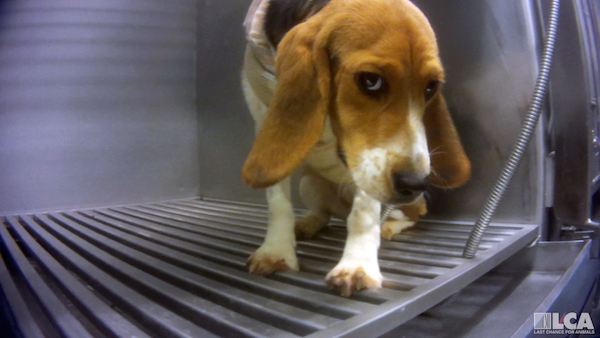 Billions of non-human animals have been burned, crushed, sliced, electrocuted, poisoned, and psychologically tormented in the name of research. What have we learned from all of this suffering? That animal experimentation is inherently unethical, inevitably wasteful, and wholly unreliable.
Billions of non-human animals have been burned, crushed, sliced, electrocuted, poisoned, and psychologically tormented in the name of research. What have we learned from all of this suffering? That animal experimentation is inherently unethical, inevitably wasteful, and wholly unreliable.
In 2016, the number of recorded animals (those covered by the Animal Welfare Act) used in research in the U.S. rose to 820,812—up 6.9% from 767,622 the previous year. This does not include purpose-bred rats, mice, and birds, fish, amphibians, reptiles, and invertebrates, which comprise up to 90% of laboratory animals, yet are excluded from the Act and not counted.
"The question is not can they reason, nor can they talk, but can they suffer?"—Philosopher Jeremy Bentham
THE THREE CATEGORIES OF RESEARCH ANIMALS: PURPOSE-BRED, RANDOM SOURCE, AND CONDITIONED
Purpose-bred animals are bred specifically for research and obtained from Class A dealers who raise all their animals in a closed colony on their own premises. Researchers claim that the advantages of using purpose-bred animals include more uniform genetic control, fewer health problems, consistent vaccination histories, and animals accustomed to cage life. Adversely, researchers say purpose-bred dogs are more expensive, and they lack the proper socialization necessary for research.
Random source animals are not specifically bred for research and are purchased from pounds, Class B dealers, or donated to research. Random source animals come from a random genetic pool; that is, they have not come from controlled in-breeding. Researchers in the area of organ and cell transplantation, for example, prefer the use of "randomly outbred" animals.
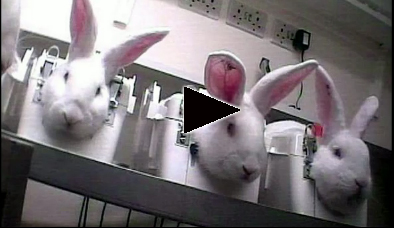 Conditioned animals are purpose-bred and random source animals that have been quarantined, vaccinated, and determined free of parasites and any other medical or biological anomaly.
Conditioned animals are purpose-bred and random source animals that have been quarantined, vaccinated, and determined free of parasites and any other medical or biological anomaly.
"During my medical education…I found vivisection horrible, barbarous, and above all, unnecessary," —Dr. Carl Jung
HUMANS AND ANIMALS: THE SIMILARITIES
The central nervous system of many animals is quite similar to our own, meaning that they feel pain in much the same way that we do. If I touched the lit end of a cigarette to a rat's nose, it would hurt him just as it would hurt you. Moreover, the limbic system in the human brain, which accounts for our emotional range, is prominent in mammalian species. They thus experience emotions as intense and authentic as our own.
HUMANS AND ANIMALS: THE DIFFERENCES
All animal species are unique, particularly at the cellular level where diseases occur. While the central nervous system of many animals is quite similar to our own, their other systems (cardiovascular, for instance) may differ greatly. It is therefore illogical to utilize animals in order to test a hypothesis about humans.
- Substances that are safe for humans, such as chocolate, are toxic to dogs and other animals.
- The hepatitis drug, Fialuridine, did not harm dogs and monkeys during animal testing but killed 5 people in human clinical trials.
- The arthritis drug, Vioxx, was found safe for monkeys but caused hundreds of thousands of cardiac instances and deaths in humans.
- Penicillin is fatal to guinea pigs.
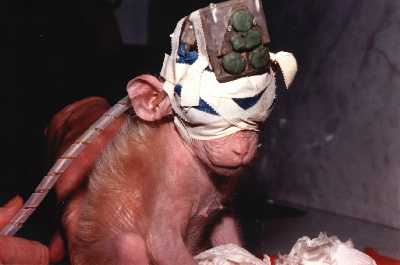
"The greatness of a nation and its moral progress can be judged by the way its animals are treated. Vivisection is the blackest of all crimes that man is at present committing against God and his fair creation," —Mahatma Gandhi
ETHICS
Ethically, animal experimentation presents a conundrum for researchers. They argue that it is useful because animals are like us. However, they simultaneously assert that it is, and can only be, morally justifiable if animals are not like us. The argument for vivisection is predicated on a contradiction that cannot be resolved.
THE RESEARCH LABORATORY
The laboratory environment is often so stressful for animals that their hormone levels, cancer rates, and susceptibility to infections are affected; the anxiety triggered by confinement frequently suppresses their immune systems. They often exhibit illnesses, making it difficult, if not impossible, for researchers to determine which symptoms are the result of the experiment and which can be attributed to the laboratory situation itself.
LABORATORIES AND SECRECY
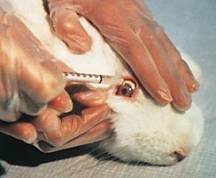
Intentionally inflicting suffering and eventual death on an animal could result in a criminal conviction if done in public under any state's law. Yet because vivisection is done behind closed doors at the hands of scientists, the suffering continues.
To hide this suffering, animal experimentation laboratories are built without windows. They have extensive security systems to prevent public entry.
The image the vivisectors present to the public is that of an anesthetized rat in a comfortable cage. The reality, however, is that researchers often do not use anesthesia in product testing, for instance, to reduce variable factors. Rats and other animals, then, are left to suffer.
POUND SEIZURE
Pound seizure, in which animals who arrive at the pound are required by law to be turned over to laboratories for experimentation on demand if they are not reclaimed by their guardian or adopted out, is still in effect in some animal shelters. While many pound animals are euthanized, euthanasia involves a quick and painless death. Lab animals, on the other hand, are subjected to the ordeal of being transported to the research facility, the trauma of the laboratory situation, and the pain of experimentation before being killed.
MEDICAL SCHOOLS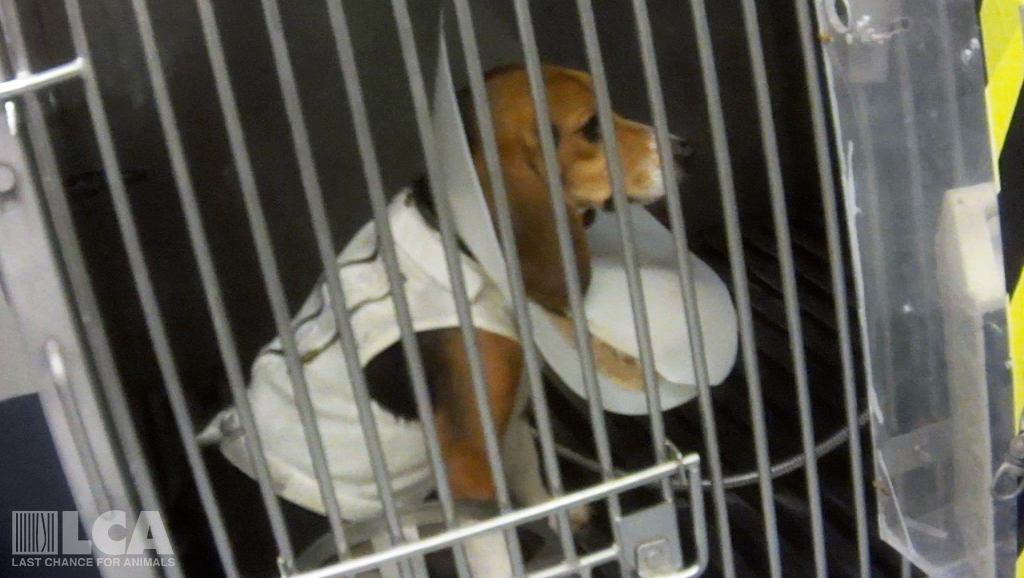
Many of the nation's medical schools, including Dartmouth and Stanford, do not use animals to train their students. LCA urges others to follow suit.
Hippocrates instructed, "First, do no harm." Students attending universities and medical schools that teach vivisection are expected to inflict pain on their first patients, an act which no doubt desensitizes them to suffering. A better lesson might be Albert Einstein's: "Our task must be to free ourselves by widening our circle of compassion to embrace all living creatures and the whole of nature in its beauty."
ALTERNATIVES TO ANIMAL TESTING
- In vitro studies
- Computer modeling
- Epidemiological studies
- Cell and tissue cultures
- Clinical studies
- CAT, PET, and MRI scans
- Quantitative-structure activity relationship analysis
- Chemical toxicity assays
- Supervised operating room experience
A FEW OF THE MEDICAL ADVANCES MADE WITHOUT ANIMAL RESEARCH
- AIDS was first identified in non-animal studies when rare infections and malignancies began appearing in patients in the late 1970’s.
- Clinical studies revealed that lowering cholesterol levels with drugs, diet, or both prevents heart attacks and strokes.
- Discovery of Penicillin
- Development of x-rays
- Production of Humulin, a synthetic copy of human insulin, which is superior to animal-derived sources in terms of improving human health.
